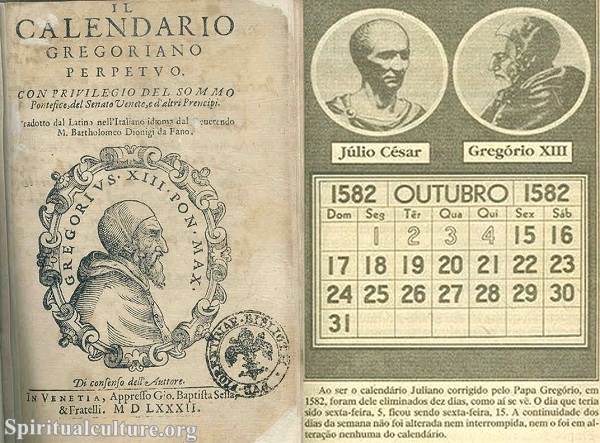The Julian Calendar represents a crucial milestone in the history of timekeeping. Introduced by Julius Caesar in 46 B.C., it reformed the complex and often disordered Roman calendar system. Understanding the inception of the Julian Calendar not only sheds light on the progression of calendrical systems but also allows us to appreciate the historical context in which these changes occurred. This article will explore the origins of the Julian Calendar, its key figures, structural changes, its transition to the Gregorian Calendar, and its modern-day uses.
Historical Context of the Julian Calendar
Development of the Roman Calendar
Before the Julian Calendar was established, the Roman Calendar underwent various changes. The original Roman calendar, attributed to Romulus, the legendary founder of Rome, comprised ten months starting in March and only accounted for 304 days. The year began with the spring equinox, which meant it was significantly out of sync with the solar year.
The calendar evolved through the years, with the most significant modification attributed to the second king of Rome, Numa Pompilius. He added January and February to create a 12-month calendar, but this change did not resolve the discrepancies with the solar year. The lunar calendar relied on the sighting of the moon, leading to varied lengths of months and leading to misalignments with the seasons.
Issues with the Pre-Julian Calendar System
By the time of Julius Caesar, the Roman calendar was about 90 days off from the solar year, primarily due to the irregularity of the leap months that were inserted to realign the calendar. Political manipulation also affected the calendar, as emperors frequently added months to extend their power or shorten political adversaries’ terms. This resulted in a confused and dysfunctional system that led to significant seasonal discrepancies in religious festivals and agricultural events.
Concerns about the calendar’s accuracy grew increasingly urgent, prompting the need for a thorough overhaul that would provide a consistent, reliable measure of time.
Key Figures Involved in the Reform
Julius Caesar’s Role
Julius Caesar played a pivotal role in enacting the reform of the calendar. In 46 B.C., Caesar decided to address the inaccuracies of the Roman calendar. After consulting with astronomers and philosophers, he recognized the necessity for a calendar that better aligned with the solar year. Caesar was inspired by a solar calendar system used in Egypt, leading to a bold reform of the Roman Calendar.
In creating the Julian Calendar, Caesar sought to simplify the calendar system by adopting a year of 365 days with an additional day added every four years to account for the solar year’s actual length (365.25 days). This decision was critical not only for administrative coherence but also aligned the calendar with the seasons, making it easier to schedule agricultural and civic activities.
Astronomer Sosigenes of Alexandria
Sosigenes of Alexandria, a prominent astronomer, was instrumental in the formulation of the Julian Calendar. Caesar enticed him to provide expert guidance on creating a calendar system based on the solar year. Esseentially, Sosigenes established the fundamental framework for the Julian Calendar by providing crucial insights into solar cycles and recommending the structure of the months.
Sosigenes suggested that the seasonally important month of February should have 28 days, while longer months should alternate with 30 and 31 days. His proposal greatly influenced the success of the reform.
Implementation of the Julian Calendar
Date of Introduction
The Julian Calendar was officially implemented on January 1, 45 B.C. The first year under the new system is known as the Year of the Julian. To realign the calendar with the seasons, Caesar introduced a transition year of 445 days—effectively incorporating an extended 90-day summer period that resulted in the lost time being compensated, providing a smooth transition into the new calendar system.
Changes Made to the Calendar Structure
Under the Julian system, the year was divided into 12 months with the following structure:
- January: 31 days
- February: 28 days (29 days in leap years)
- March: 31 days
- April: 30 days
- May: 31 days
- June: 30 days
- July: 31 days
- August: 31 days
- September: 30 days
- October: 31 days
- November: 30 days
- December: 31 days
This structure established a more uniform and predictable system for the measurement of days, crucial for civil administration, agriculture, and religious observances.
Details of the Julian Calendar Reform
Structure of the Julian Calendar
The Julian Calendar consists of a regular year of 365 days, made up of 12 months. Every fourth year includes an extra day, February 29, known as a leap year, to accommodate the extra approximately 0.25 days each year. This systematic method of adding an extra day to February every four years stabilized the synchronization between the calendar year and the solar year.
Adoption of Leap Years
The introduction of leap years marked a significant advancement in timekeeping. The decision to include an additional day every four years allowed the Julian Calendar to stay relatively aligned with the astronomical seasons over long periods. Although this method was effective, it fell short over centuries, as the solar year is approximately 365.2425 days. Consequently, the Julian Calendar gradually shifted out of alignment with the equinoxes.
Transition from the Julian to Gregorian Calendar
Reasons for the Transition
By the late Middle Ages, discrepancies in the Julian Calendar became pronounced, leading to misalignment of key dates in the liturgical calendar. The need arose for a more precise calendar to accurately reflect the solar year and ensure the alignment of seasons and festivals. In 1582, Pope Gregory XIII introduced the Gregorian Calendar to address these concerns.
The key changes included the refinement in the leap year system, which established that leap years would occur in years divisible by four, except for years divisible by 100 unless they were also divisible by 400. This modification resulted in a year averaging 365.2425 days in length, aligning closely with the actual solar year.
Historical Adoption Dates in Different Countries
The adoption of the Gregorian Calendar was not uniform. Catholic countries like Italy, Spain, and Portugal quickly adopted the new calendar in 1582. Protestant nations, particularly in Northern Europe, were slower to accept the changes, with countries such as Great Britain and its colonies adopting the Gregorian Calendar only in 1752. Russia continued using the Julian Calendar until the early 20th century, with the transition occurring after the 1917 October Revolution.
The varied adoption dates resulted in the “calendar gap,” where different regions celebrated religious and civil events on different dates, leading to confusion and inconsistencies.
Modern Use of the Julian Calendar
Current Usage in Religious Contexts
Despite the widespread adoption of the Gregorian Calendar, the Julian Calendar continues to hold significance in some religious contexts. Certain Eastern Orthodox Christian churches still utilize the Julian Calendar for their liturgical dates. As a result, many Christian holidays, including Christmas and Easter, are celebrated later than their Gregorian Calendar counterparts.
The variance in dates between the two calendars has resulted in differing traditions and practices within Christian communities, leading to a rich tapestry of cultural expressions based on these calendars.
Application Among Different Cultures
In addition to religious contexts, the Julian Calendar has seen contemporary use among various cultural groups. Some nations retain aspects of the Julian Calendar for cultural or historical reasons. For instance, the traditional calendar used by some Slavic cultures draws on elements from the Julian Calendar.
In 1999, the Russian Orthodox Church reaffirmed its use of the Julian Calendar, indicating the ongoing relevance of this ancient system in defining cultural and religious identity.
Conclusion
The Julian Calendar’s inception marked a substantial advancement in the history of timekeeping. It emerged as a solution to the disorganized Roman calendar system, facilitated by key figures like Julius Caesar and astronomer Sosigenes of Alexandria. While the Julian Calendar was a significant improvement, the eventual adoption of the Gregorian Calendar has further refined our measurement of time.
Today, while the Gregorian Calendar predominates in civil life, the Julian Calendar retains its importance in certain religious and cultural contexts, highlighting its enduring legacy. Understanding the origins, reformation, and current applications of the Julian Calendar enables us to appreciate the complexities of timekeeping and the continuous evolution of human society in relation to the natural world.



